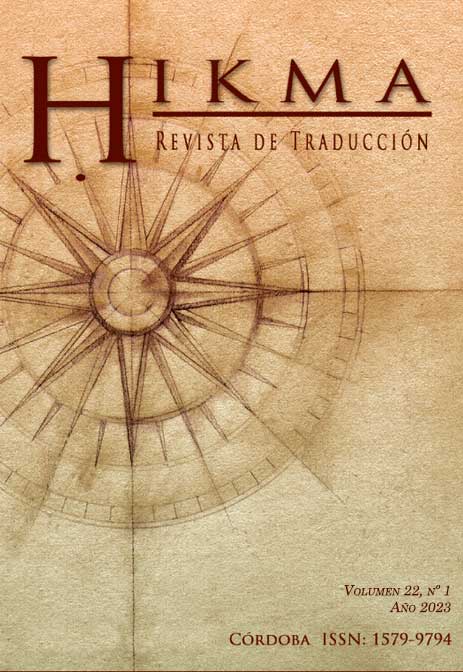Sex, love and words The translation for dubbing teen series
Main Article Content
Abstract
Teen series have already been present for years and represent scenes and situations with which young people and teenagers identify. Nevertheless, not only do they identify with these scenes, but they also recognise the vocabulary and expressions used by their protagonists. Thus, teen series recreate a sort of youth slang which, among other topics of interest to the audience, addresses sexual and love relationships. Through translation, these series reach different countries and a wide range of viewers. In the case of dubbing, despite being based on a prefabricated orality, the dialogues must be as natural as possible so that they are plausible for the target audience. Therefore, the vocabulary related to sexual and love relationships in Spanish should endeavour to produce the same feelings among the target audience as it did among those of the original version.
This paper explores twelve episodes of three teen series broadcast in recent years (2019-2022) both in their original version and in their Spanish dubbed version, with the purpose of analysing the translation challenges derived from the presence of youth language, its potential caducity and the censorship applied, in order to establish our own taxonomy for the classification of the language of relationships. Thus, the conclusion reached is that a very similar number of slang terms are used in both languages, albeit with some interesting differences; yet, in general, viewers of the original version and the dubbed version may have a similar experience.
Downloads
Article Details

This work is licensed under a Creative Commons Attribution-NonCommercial-ShareAlike 4.0 International License.
Authors who publish with this journal agree to the following terms:
1. Authors retain copyright and grant the journal right of first publication with the work simultaneously licensed under a Creative Commons Attribution License that allows others to share the work with an acknowledgement of the work's authorship and initial publication in this journal.
2. Authors are able to enter into separate, additional contractual arrangements for the non-exclusive distribution of the journal's published version of the work (e.g., post it to an institutional repository or publish it in a book), with an acknowledgement of its initial publication in this journal.
3. Authors are permitted and encouraged to post their work online (e.g., in institutional repositories or on their website) prior to and during the submission process, as it can lead to productive exchanges, as well as earlier and greater citation of published work (See The Effect of Open Access).

